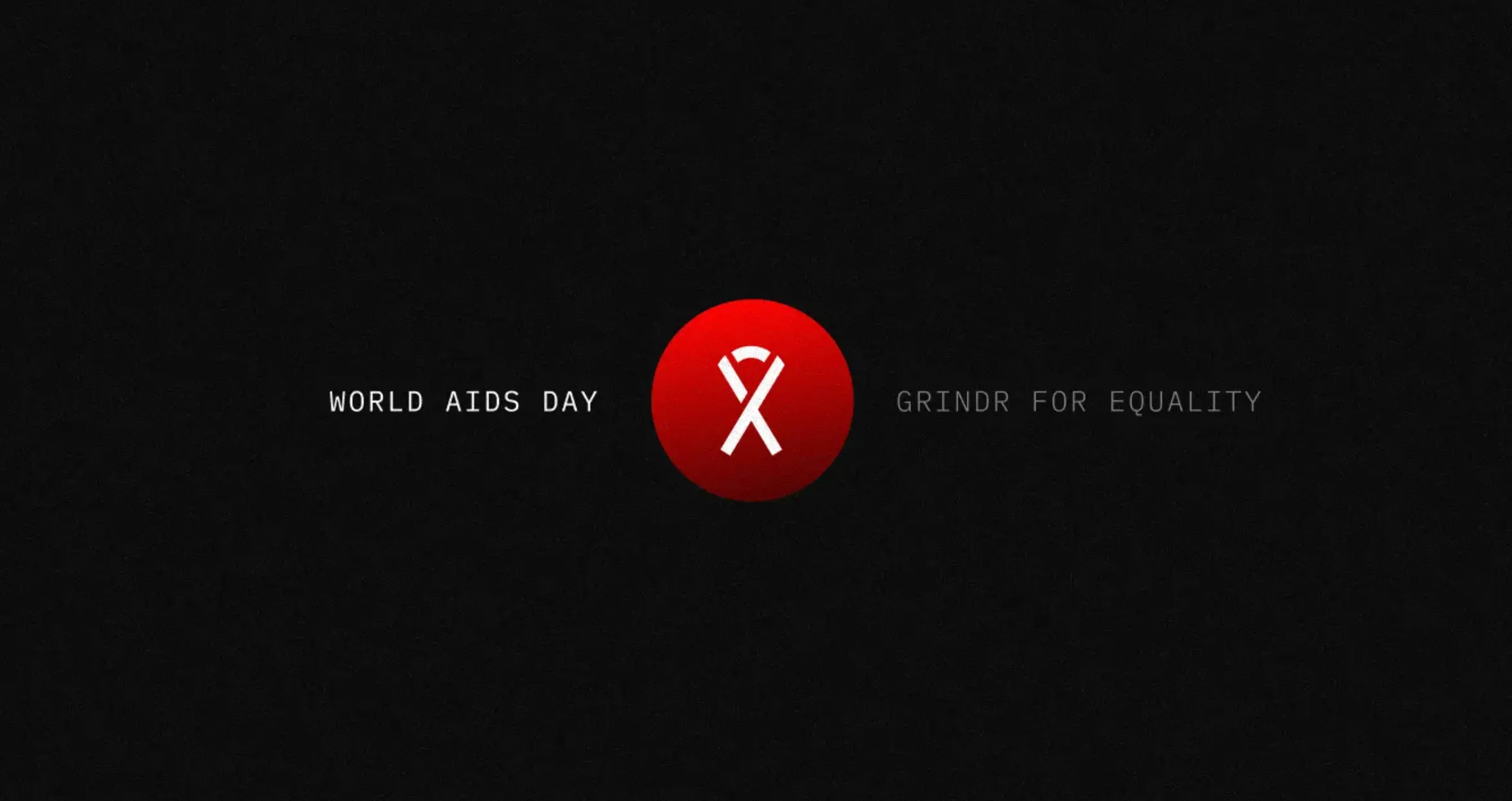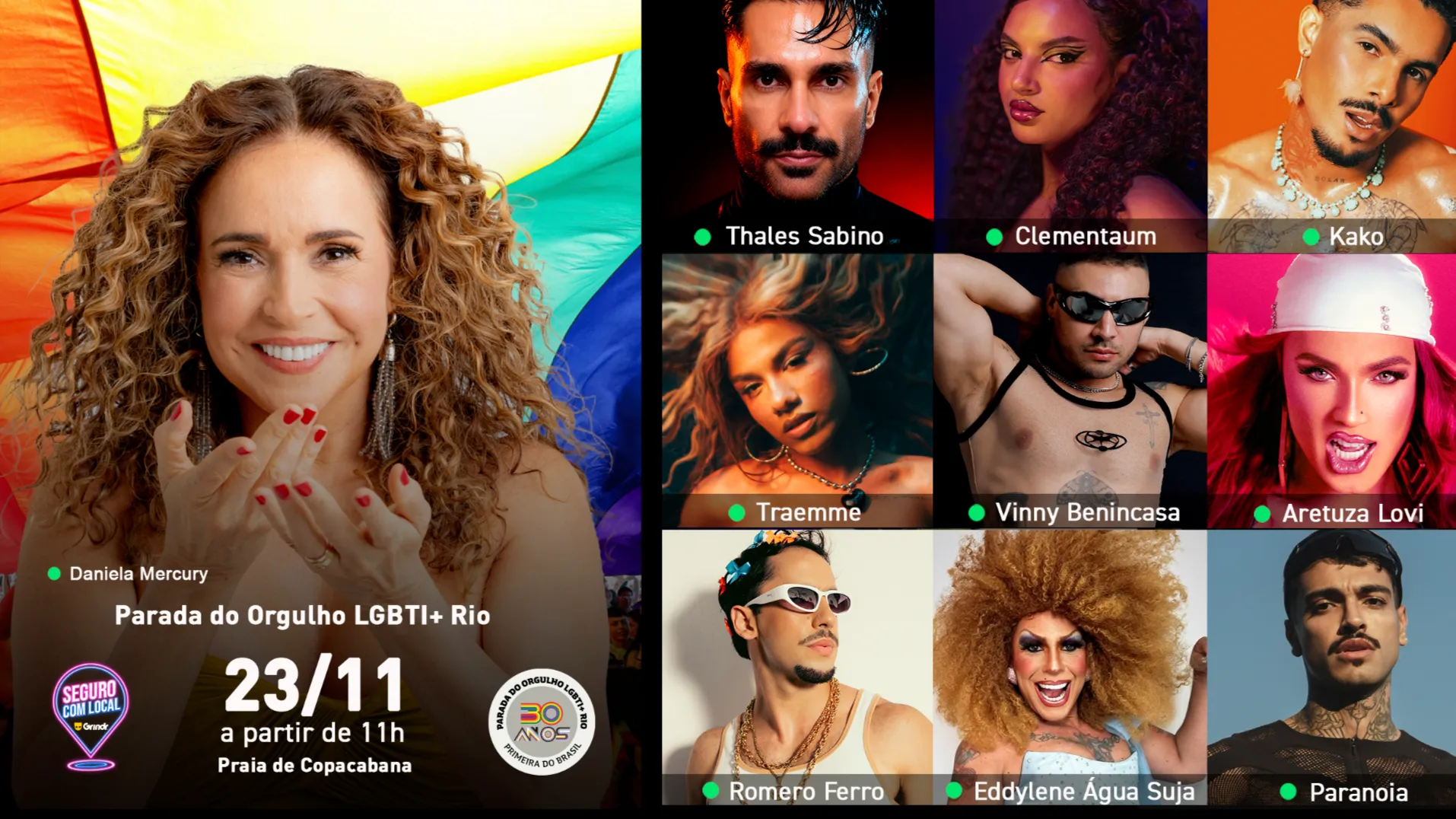Polyamory vs. Polygamy: A Deep Dive Into the World of Multiple Loves


Portland poly and Salt Lake poly are two wildly different things. But while we’d normally say “to each their own,” there’s a pretty clear winner in the polyamory versus polygamy debate. One will fill your life with love. The other is likely to saddle you with 20 kids whose names all start with J. One’s illegal, the other is growing more accepted by the day.
So which is better? We’ll explore the differences and let you decide for yourself. But if you land on the side of polygamy, just trust us — the Grindr blog isn’t the place for you.
What is polyamory?
Picture this: You're in a loving relationship, but you don’t have to feel guilty for indulging in a soul or body connection with another person. You can have one-time or long-term romantic or sexual relationships with other people, and so can your partner (or partners).
“Poly” means many, and “amor” is Latin for love. So the literal definition of “polyamory” is “many loves.” Not every polyamorous relationship operates by the same rules, but the key is that everyone knows and consents to it. It's all about openness, communication, and honesty. You might also hear this practice referred to as ethical or consensual non-monogamy. But there’s one word that definitely doesn’t apply: cheating.
What is polygamy?
Etymology can also help us understand what polygamy is: “Gamos” is Greek for marriage. Pair that with “poly” and you get “many headaches,” er, “many marriages.” In other words, polygamy is the practice of having more than one spouse.
The word “polyamory” has only been around since the ’90s, but polygamy has biblical roots (surprise, surprise). The practice’s history long predates the Mormons with whom many in the Western world associate it today, playing a vital political and reproductive role in many ancient and indigenous cultures around the world.
The differences between polyamory and polygamy
To make things a little clearer, let’s put polyamory and polygamy side by side:
- Marriage: Polygamy involves marriage to multiple people. Polyamory doesn’t necessarily involve marriage.
- Gender: Polygamy often involves one man with multiple wives (polygyny) or one woman with multiple husbands (polyandry). Polyamory doesn’t have gender-specific rules.
- Cultural and religious ties: Polygamy is often associated with certain cultures or religions. Polyamory is more about personal choice and lifestyle.
- Communication and consent: Polyamory emphasizes open communication and consent among all involved. Polygamy doesn’t necessarily involve this level of openness and communication.
- Flexibility: Polyamory tends to be more flexible in terms of the relationships you can form. With polygamy, relationships are more structured.
Is polyamory the same as hypersexuality?
There’s a common misconception that people only become polyamorous because they’re obsessed with sex. But while we certainly agree that sex is worth obsessing over, equating hypersexuality with polyamory ignores the deep levels of emotional intimacy that many people in non-monogamous relationships experience.
Polyamory is about forming romantic relationships with multiple people — this can include sex, but it’s not the driving factor. Hypersexuality, on the other hand, is an increased need for sexual gratification. It’s possible to be both hypersexual and polyamorous, but asexual people can practice ethical non-monogamy too.
The benefits and drawbacks of polyamory
Maybe you’re reading this because your romantic partner pitched the idea of an open relationship. Or maybe you’re the one wondering if bringing in new partners might help you feel more romantically or sexually fulfilled. (If you came looking for tips for becoming polygamous, you’ll have to look elsewhere — that’s not the type of marriage equality Grindr supports.)
Whatever brought you here, it’s important to understand the pros and cons of polyamory before attempting this unconventional (but increasingly popular) kind of relationship.
Polyamory perks
- More love and support: Having multiple partners can mean more love and support for your emotional well-being.
- Self-discovery: Engaging with different people can help you learn more about yourself.
- Diverse experiences: Different partners can open up a world of unexplored life experiences.
- Communication skills: Polyamorous people tend to have stellar communication skills.
- Sexual fulfillment: Exploring intimate relationships or casual sex with other people (within the rules agreed upon with your primary partner) can keep sexual incompatibility from damaging an otherwise healthy relationship.
{{video-inline-cta}}
Polyamory pitfalls
- Jealousy: Are you or your partner the jealous type? Polyamory may be hard for you to pull off.
- Time management: Juggling multiple relationships can be time-consuming.
- Social stigma: Polyamory is becoming more common in progressive parts of the world, but many people still misunderstand and judge the practice (but don’t let that stop you!).
- STI risk: Having multiple sexual partners can increase the risk of STIs if you or your partners don’t practice safe sex.
What are the different types of polyamory?
As of 2022, an estimated 17 million Americans were practicing consensual non-monogamy. But polyamory plays out in a number of ways. Here are nine of the different types.
- Hierarchical polyamory: When you’re committed to a primary partner but seek one or more secondary relationships, you’re practicing hierarchical polyamory.
- Non-hierarchical polyamory: No matter how many partners you have, each factors equally into decisions affecting the relationship.
- Kitchen table polyamory: If you’re open to knowing and befriending your metamours (your partner’s partners), you’re practicing kitchen table polyamory.
- Parallel polyamory: If you and your partner are both cool with seeing other people but want nothing to do with your paramours, you’re practicing parallel polyamory.
- Garden party polyamory: If you don’t want to be friends with your paramours but aren’t against socializing with them at special events, you’re practicing garden party polyamory.
- Throuple: Like a couple, but make it three.
- Quad: If three’s not a crowd, four must be a fantasy.
- Solo polyamory: If you live alone or with a non-romantic partner but enter multiple romantic relationships, you’re practicing solo polyamory.
- Single polyamory: If polyamory is your preferred relationship style but you’re not currently in a relationship, you’re a single poly, which can be good information to share on dating apps.
- Relationship anarchy: Relationship anarchy assumes no hierarchy between friends, family, romantic partners, or anyone else you have a relationship with.
How to decide if polyamory is right for you
Much like condoms, relationships aren’t one-size-fits-all. Polyamory requires strong communication skills, emotional intelligence, and an open mind. Ask yourself if you're comfortable with sharing your partner and if you have the time and emotional energy for multiple relationships. It's not for everyone, and that’s totally okay.
Talking to others with experience in polyamorous relationships can be a valuable source of insight. But at a minimum, consider these factors before making your decision:
- Your ability and willingness to commit
- Your jealousy levels
- Your respect for personal boundaries
- Your ability to openly communicate your needs
- Your ability to understand your partners’ needs
- Your comfort knowing you or your partner can decide at any time that the arrangement isn’t working out
We can’t stress the importance of emotional intelligence enough. Your ability to recognize and understand emotions in yourself and others and to then use that awareness to manage your behavior is the bedrock of a healthy polyamorous relationship.
Is polyamory legal?
Unlike polygamy, most countries and cultures don’t outlaw polyamory. But that doesn’t mean the practice isn’t frowned upon. And in some places, being poly can have legal or professional implications, especially if you work in a role with strict rules regarding conduct and public image.
While polyamory isn’t illegal in the U.S., polyamorous people are considered sexual minorities, which can open you up to the same types of discrimination LGBTQ people face every day. If you’re fighting with an ex for custody of your children, the judge may rule in favor of the monogamous parent. If you’re part of a cohabitating throuple or quad, you may have trouble getting approved for a home that limits the number of unrelated adults to two.
Do polyamorous relationships last?
Many critics of polyamory assume that opening up the relationship is just the beginning of the end. But just like any other type of relationship, the longevity of a poly partnership will be influenced by a number of factors, like communication, compatibility, and commitment.
A typical polyamorous relationship structure involves one primary relationship, with both halves of the couple creating connections or secondary relationships with other people based on a previously agreed-upon set of rules. But it doesn’t have to be that way. Some people find lifelong happiness as a throuple. Some practice polyfidelity, where three or more people commit to exclusivity within the group.
The key to a lasting relationship (if that’s what you want) is to ensure everyone involved is on the same page regarding expectations and the amount of effort it will take to meet each individual’s needs. If you fulfill those requirements, there’s nothing saying your partnerships can’t last just as long as a traditional relationship.
Looking for a new partner?
With more than 10 million monthly active users, Grindr is a great place to find people to connect with, no matter your relationship style. Get the Grindr app, or browse hands-free with Grindr Web — the same Grindr you know and love, now available on your laptop or PC with no download required.
When dating multiple people, your sexual health should be at the top of your priority list. Grindr is proud to partner with Building Healthy Online Communities to offer free, at-home HIV self-test kits that provide results in minutes. To order, just open Grindr, click on your profile photo in the upper left-hand side of the Grid, and select Free Home HIV Test.










.gif)
.webp)


.webp)
.webp)










